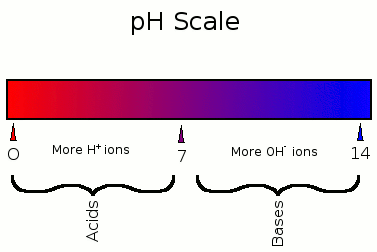operation oaxaca: peel it more.
continuation of product. (004)
this is carlos.
i discussed more about the mango peels.
i also looked *briefly* into the mango leaves.
maybe they are better than mango peels themselves.
the short answer is: no.
more mangoes than mango leaves.
long answer: chemistry is good. there’s abundancy in usa & mexico.
but economics :\
these are the revelations.
CJ
leaves.
bisosorption was influenced by various process parameters (metrics).
these included:
- pH
- temperature
- initial number (concentration) of heavy metal ions
- biosorbent dosage
- speed of agitation
- biosorbent + biosorption → the biological tool used to filter metal ions (e.g. the mango peel)
the iron atom in the mango leaf structure is bound to its intermediate neighbours by a coordinate covalent bond.
how?
by accepting a lone pair of electrons from the non-metal atom.
the non-metal atom is water; because the leaf is emerged in a container (solution) of water with iron metal ions.
coordinate covalent bond → a covalent bond in which both of the shared electrons come from the same atom.
a covalent bond is formed by two atoms sharing a pair of electrons.
a pair is two electrons, btw.
the atoms are held together because the electron pair is attached by both of the atomic nuclei (where all the positive charge of the atom is located, the nucleus, the protons).
in the formation of a simple covalent bond,
each atom supplies one electron to the bond.
but in coordinate covalent bonds, that doesn’t occur.

pH & iron.
the pH is a measure of hydrogen ion (h+) concentration in the container (solution).
h+ is a proton.
when you increase the pH value…
the iron metal ion concentration will change within the water.
but when the number of iron metal ions (dosage) increases…
the pH range of the water (to adsorb metal ions) will be affected.
how?
the percentage removal of iron can be calculated by using this equation:
removal (%) = { [ C(i) — C(f) ] / C(i) } x 100
C(i) = initial iron concentration (before iron removal)
C(f) = final iron concentration (after attempted iron removal)
in english, here’s the steps:
- subtract [ c(i) — c(f) ] from the numerator
- use the answer from step 1 & divide that by c(i) in the denominator
- multiply the number by 100. you’ll get the percentage of iron removed.
in mango leaves, there are functional groups of alcohols & phenols which have o-h groups & are hydrogen bonded.
and there are alkanes with a C-H bond in the mango peel.
and alkynes with a C≡C bond in the mango peel.
alkanes → single bonds that occur between carbon atoms in a molecule in organic chemistry.
alkynes → triple bonds that occur between carbon atoms in a molecule in organic chemistry.
but what attracts the metal ions to the mango leaves?
in the mango leaves, there exists carbonyl & hydroxyl groups in the biosorbent.
hydroxyls & carbonyls tend to have an anionic charge (negative).
heavy metal ions tend to have a cationic charge (positive).
opposites attract.
and yes, hydroxyl groups have a high affinity (tendency) to adsorb iron metal ions.


a carbonyl group has a double bond with carbon & oxygen.
a hydroxyl group has an -oh group attached.
the “R” in each group stands for an unknown molecule/compound.
my best guess is that it’s a methyl group (CH3).
surface area. and more pH.
the specific surface area & toal pore volume are two major factors that affect the mango leaves’ ability to adsorb iron metal ions from water.
the more pores (microscopic holes) in a mango leaf surface means there’s more space for iron metal ions to fall into the pores,
and can be captured on the surface of the leaf.
p.s. - biosorption is a physical + chemical process (physiochemical) that naturally allows attaching (binding) a certain contaminant onto the cellular structure of an object.
in this case, the cellular structure is the mango leaf.
temperature of water can increase the biosorption of iron atoms.
these are the two factors for this to occur:
- there are more available open pores (active sites) for iron biosorption on the mango leaves.
- the thickness of the biosorbent on the mango leaf has decreased, so there’s less resistance of iron metal ions attempting to attach to the biomass of the mango leaf.
as for the pH…
the best pH for maximum adsorption of iron metal ions on mango leaves is a pH of 9.
why?
as pH increases…
there’s less battling between floating protons & the cationic iron metal ions.
the anionic carbonyl & hydroxyl functional groups is what the protons & iron ions are fighting for.
but when pH increases, the solution becomes more positively charged.
the functional groups & the mango leaves are negatively charged.
in a sea of positive, but a leaf of negative,
the metal ions are going to “run” to get to the negative site charges.
because in a higher pH (greater than 7), the smaller the amount of H+ ions are present.
those H+ ions detach from the mango leaf pores (active sites) & allow for the metal ions to bond instead.
and to conclude…
it is almost always that the pH gets the last laugh.
it’s one of the most effective environmental parameters for adsorption of heavy metal ions…
because it can affect how strong the degree of ionization & how many adsorption sites are available on the sorbent’s surface during the biosorption process (on the mango leaf).


© 2024–2100 by Carlos Manuel Jarquín Sánchez. All Rights Reserved.
